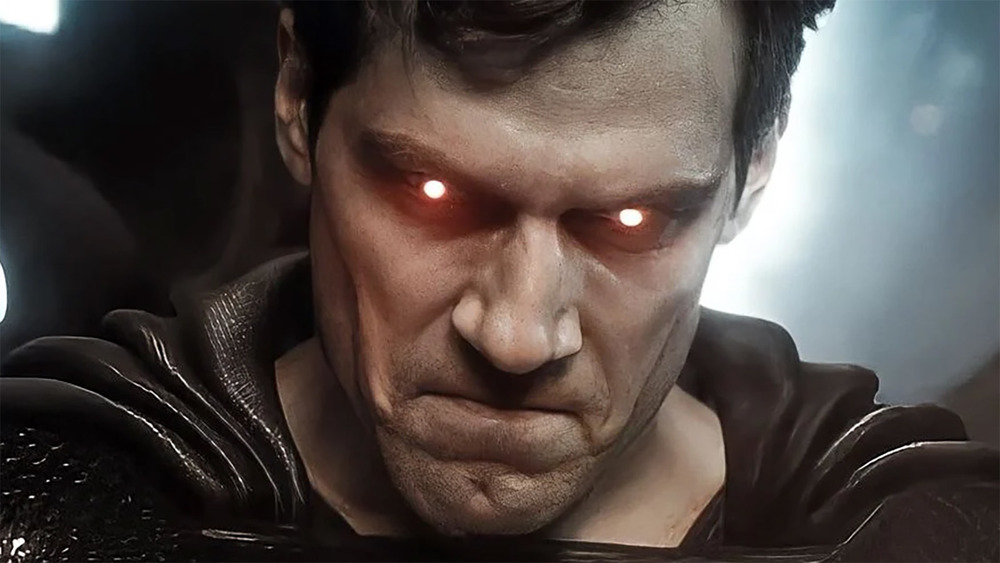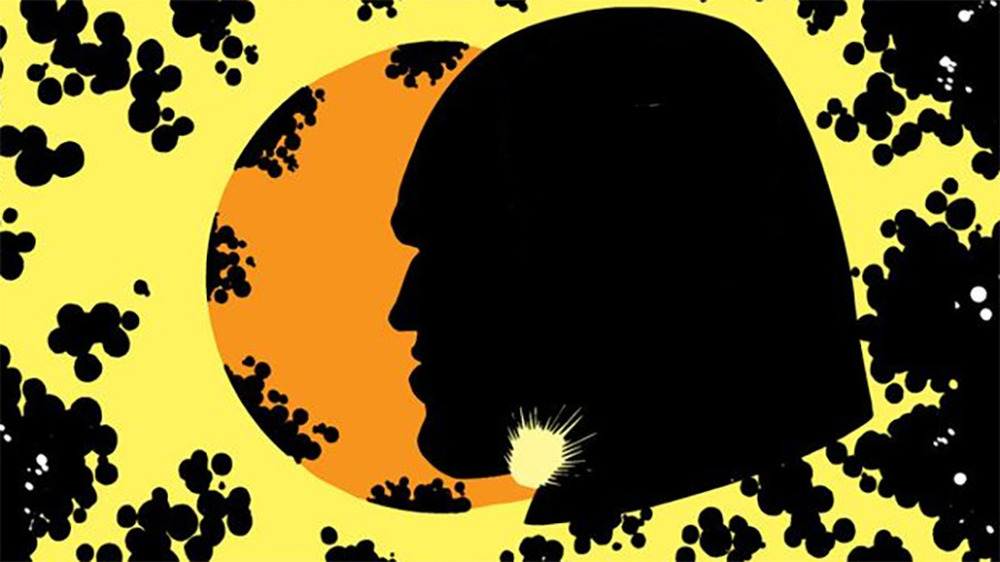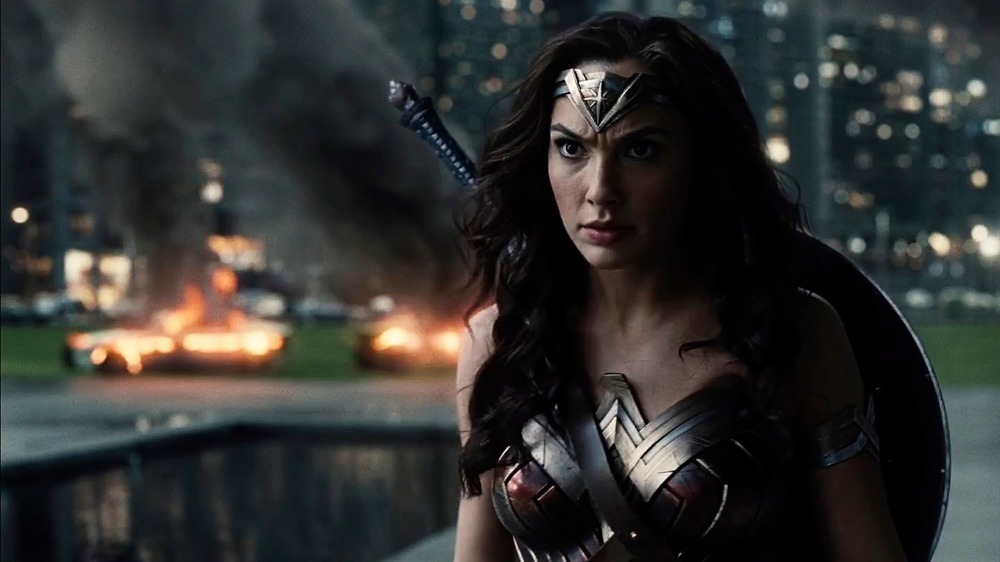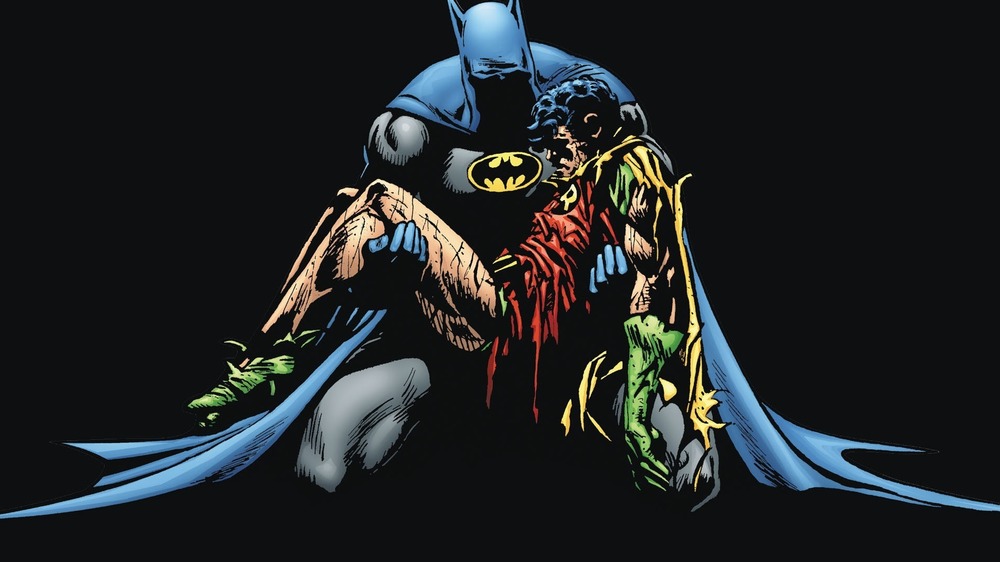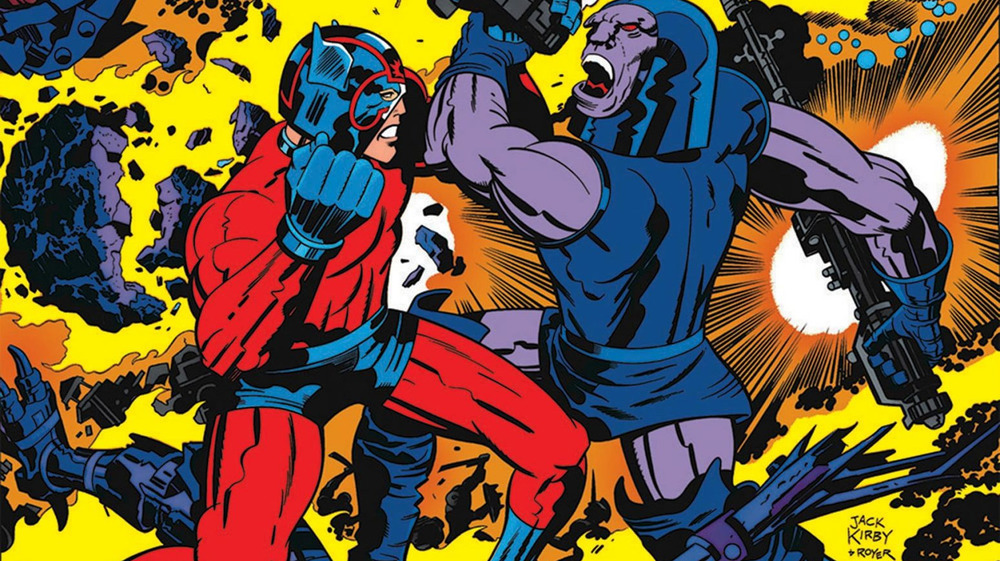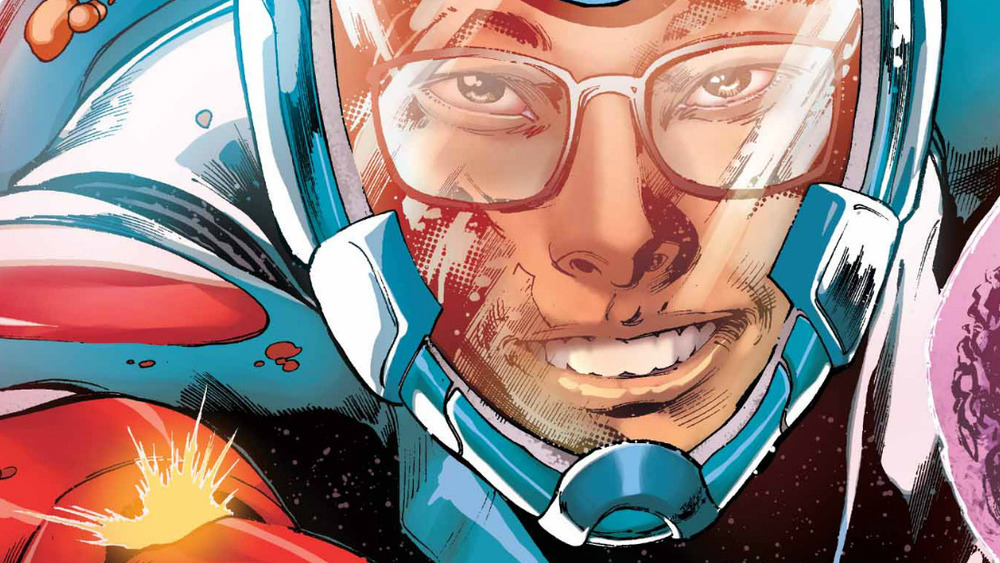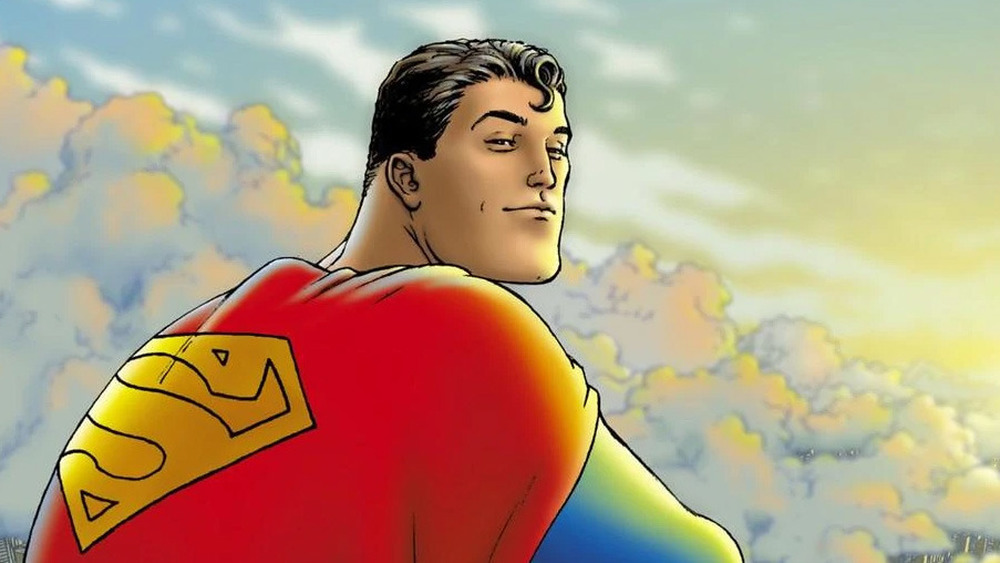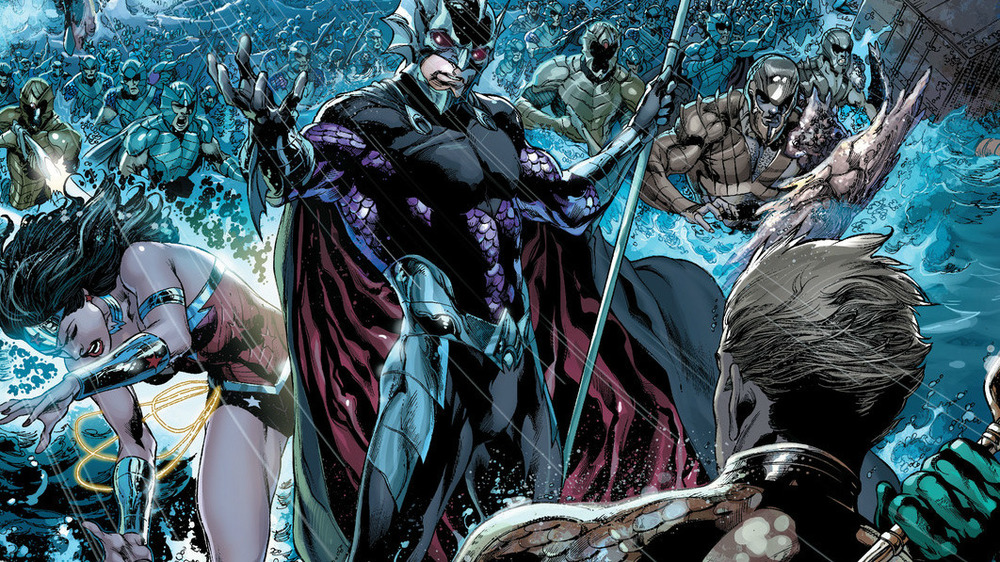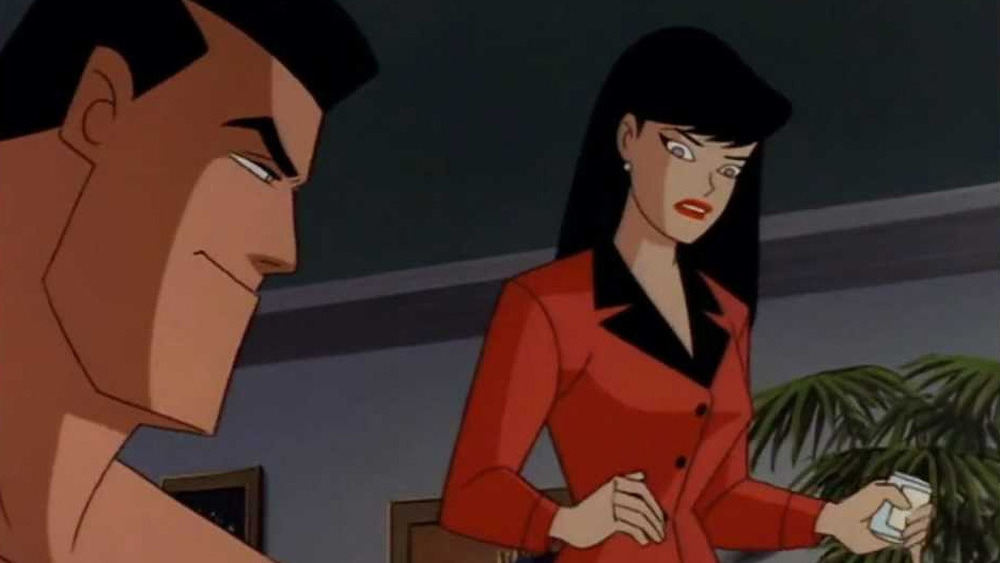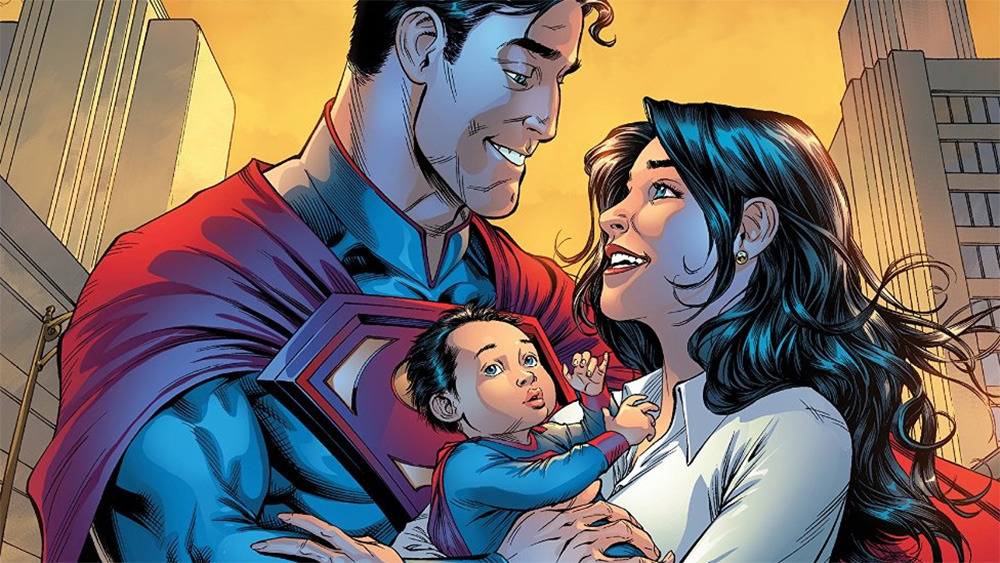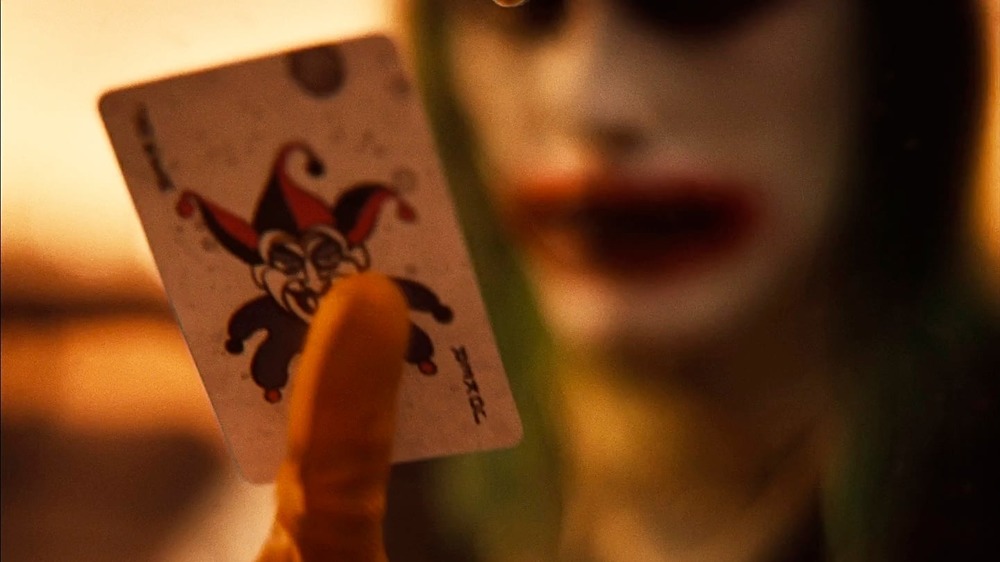Lines In Zack Snyder's Justice League That Are More Important Than You Realized
A neck-snapping Superman. A gun-toting Batman. A Mother Box-powered Cyborg. On the surface, Zack Snyder's Justice League looks like it's taking DC's classic superheroes and using their unmistakable iconography to do its own thing. And hey, if that were true, it would be fine — but look a little closer. While Zack Snyder's Justice League certainly offers a fresh take on DC's characters, it's also quite respectful of the source material, provided you know what to look for.
Some of those references come from the movie's story, which draws heavily from The Dark Knight Returns, The Death and Return of Superman, and Justice League: Origin. Others arrive in the form of Easter eggs scattered throughout the film's lavish sets. Finally, much of the film's dialogue evokes classic comic book characters and plotlines, even as it reconfigures elements from those stories into something brand new.
The following lines go by quickly, but they're loaded with meaning. Some will be obvious to long-time DC fans. Others will be irresistible to Snyder aficionados. In either case, they're a testament to how much love and care was put into making the movie. It took a while, but with attention to detail like this, it was more than worth the wait. Here are some of the key quotes from Zack Snyder's Justice League.
"I've come to enlighten you to the great darkness. I will bathe in your fear."
Most people would be intimidated by the sight of a phalanx of battle-hardened Amazonian warriors, but not so Steppenwolf. When Darkseid's lieutenant breaches the stronghold on Themyscira, he doesn't cower in fear. He taunts Hippolyta and her soldiers before unleashing a horde of parademons on the vigilant defenders.
A few minutes later, Steppenwolf repeats himself. "You can't save any of them," he growls. "The great darkness begins." If you're a longtime DC Comics fan, your ears probably perked up immediately. Published in 1982, The Great Darkness Saga was a five-part storyline that started in Legion of Superheroes #290. Written by Paul Levitz and Keith Giffen and illustrated by Giffen and Larry Mahlstedt, The Great Darkness Saga pits the Legion — a group of 30th-century youths who have modeled themselves after present-day superheroes like Superman — against a mysterious villain called the Master. At first, the Master is more than a match for the Legion. Over the course of the saga, he clones Superman, sucks the power out of ancient artifacts, and enthralls the super-powered residents of the planet Daxam.
In one of the all-time greatest reveals in superhero comics, the Legion eventually learns that the Master is none other than Darkseid, who has been waiting for 1,000 years for the opportunity to strike. To this day, The Great Darkness Saga is still considered the very best Legion of Superheroes tale and one of Darkseid's most memorable appearances. It's only fitting that it gets a nod in Darkseid's feature film debut.
"Wonder Woman. What do you think, man? You think she'd ever go for a younger guy?"
Barry Allen's offhand, casually pervy quip to Cyborg isn't all that notable on its own (although Cyborg's reply, "She's 5,000 years old, Barry. Every guy's a younger guy," is one of the Snyder Cut's more memorable jokes), but it does mark a big moment in the history of the DCEU: It's the very first time in any of these movies that Diana is actually called Wonder Woman on-screen. Seriously. She doesn't get called by her superhero nickname in Batman v. Superman: Dawn of Justice, the Justice League theatrical cut, or in either of her solo films.
In the comics, of course, Diana has been going by Wonder Woman since the sixth page of her debut story, which appeared in 1941's Sensation Comics #1. Not that she comes up with the name herself. Shortly after landing in man's world, Diana causes a big scene as she outruns cars, beats up muggers, and deflects bullets with her magic bracelets. This attracts the attention of an agent named Al Kale, who signs Diana up for a stage show. It's a hit, and the newspapers soon dub her "Wonder Woman."
Diana's partnership with Kale ends just a few pages later, when Diana quits the show and Kale tries to run off with the profits. Still, by that point, she's stuck with the name. In classic comic book fashion, ends up being her own romantic rival when Steve Trevor fails to realize that his attentive nurse, Diana, and his super-powered savior, Wonder Woman, are one and the same.
"I'm happy to discuss with you, in any way you like, why you sent a Boy Wonder to do man's job."
There's a very good reason why we don't see Batman's trusty sidekick, Robin, in Zack Snyder's Justice League: He been dead for years. Before the Snyder Cut, however, all we had were oblique hints to that effect, like the Robin suit memorial in the Batcave and comments from Snyder during promotional interviews. Now, thanks to Batman's heated exchange with the Joker, Robin's murder at the hands of the Clown Prince of Crime is Snyderverse canon. Hey, better late than never.
Of course, Joker killing Robin isn't exactly a new idea. It's been done a number of times, including in Frank Miller's The Dark Knight Returns, which was a huge influence for Zack Snyder's Justice League. The most notable example, however, occurs in the '80s storyline A Death in the Family, which somehow ends up being even more morose than Snyder's take.
In Batman #427, the second installment of the story, the Joker beats Robin with a crowbar, then blows up a building with Robin still inside. That's a huge cliffhanger, but it gets even worse. Rather than letting writer Jim Starlin decide Robin's fate, DC Comics set up a 1-900 number hotline which readers could call to decide whether Robin lived or died. Death won by a paltry 72 votes, sealing the Boy Wonder's fate forever.
Now, in the Snyderverse, the Joker's victim is the first Robin, Dick Grayson, and not the second, Jason Todd. Still, it's almost impossible to hear Jared Leto's Joker gloat about his crime without thinking back to the most infamous version of the murder.
"You have the blood of the old gods in you."
Steppenwolf's half-taunting, half-admiring observation during his first real showdown with Wonder Woman begs a question: If Zeus, Ares, and the rest are the "old" gods, who are the new ones? Well, comic readers already know the answer. See, Darkseid, Steppenwolf, DeSaad, and the rest made their debut in the Fourth World Saga, which introduced the New Gods to DC Continuity — courtesy of master comic book artist Jack Kirby, co-creator of the Hulk, the X-Men, Iron Man, the Fantastic Four, Thor, Captain America, and plenty of others.
As the story goes, Kirby originally wanted to bring Norse mythology's apocalypse, Ragnarok, to the pages of Thor and kill off Thor's entire pantheon. From the ashes, a race of "New Gods" was supposed to rise, giving Kirby a whole new cast of characters to play with. That didn't happen, but when Kirby moved to DC in the '70s after a falling out with Marvel, he revisited the idea, launching the Fourth World saga across four different titles: The New Gods, The Forever People, Mister Miracle, and a revamped version of Superman's Pal Jimmy Olsen.
The Fourth World is Jack Kirby at his biggest and most imaginative, and tells the story of a cosmic battle between the forces of good and evil. On one side are the residents of the planet Genesis, which is led by Highfather and his adopted son, Orion. On the other, you have the forces of Darkseid, who resides on the planet Apokolips.
Kirby never really got to finish the story, which was maybe more ambitious than entirely coherent. Still, many of the New Gods characters became fixtures of DC's canon, so it's nice to see Steppenwolf pay subtle tribute to the story that started it all.
"Ship's all yours now, kid. You're the boss. 'Ryan Choi, Director of Nanotechnology.' That's your thing."
Ryan Choi spends most of Zack Snyder's Justice League playing second fiddle to S.T.A.R. Labs director Silas Stone, but the end of the movie sets him up for much bigger — or should we say smaller? — things. Oh, sure, in light of Silas' sacrifice, Ryan gets a much-deserved promotion, but as this line hints, that's only the beginning for the scientist. See, in the comics, Ryan Choi is better known as the Atom, a superhero with the power to change size at will (hence the whole "nanotechnology" thing).
Choi is actually the fourth superhero to take on the mantle of the Atom, following the Golden Age's Al Pratt, Ray Palmer, and former Suicide Squad recruit Adam Cray. He's also inexorably tied to the Atom's legacy. In the comics, Choi takes over Ray Palmer's position at Ivy University after the superhero goes missing, leading him to Palmer's old "bio-belt," which harnesses the power of a miniature white dwarf star in order to give its wearer size-changing abilities. Good thing, too, because Palmer's experiments had destabilized the area around Ivy Town, making it a target for evil magicians, tiny aliens, and all other kinds of weird threats.
While Ray Palmer is still the most popular version of the Atom, Choi has actually appeared in a number of other DC Comics adaptations. In the CW's gigantic Crisis on Infinite Earths crossover, he was played by Osric Chau, and he's popped up in a bunch of animated projects as well.
"You will give the people of Earth an ideal to strive towards... They will stumble, they will fall... They will join you in the sun, Kal."
The words that echo through Clark Kent's head as he reclaims his superhero identity are a throwback to Man of Steel, during which Russell Crowe's Jor-El delivers a heartfelt speech to his son on the soundtrack while Superman flies for the first time. It's more than that, though. It's also a reference to All-Star Superman by Grant Morrison and Frank Quitely, one of the very best Superman comics ever published.
Published in 2006, All-Star Superman is a streamlined, continuity-free take on the Man of Steel that aims to tell timeless Superman stories revolving around a simple concept. Thanks to Lex Luthor's machinations, Superman's powers become overcharged by solar radiation. He's never been more powerful. He's also dying, with only a year left to live.
Superman spends his remaining time on Earth doing what he always does: working to make it a better place. Still, even the Man of Steel has limits. Eventually, solar radiation poisoning catches up with Superman, and he begins to pass. That's when he encounters a memory of his father, Jor-El, who delivers these same poignant words. They're not much, but they're enough. Superman rallies and foils Luthor's schemes, then literally ventures into the center of the sun, which he keeps burning for all of eternity.
Jor-El's speech is already a perfect summation of Superman's entire deal, but it becomes even more poignant given its placement in Zack Snyder's Justice League. As in the comic, it comes at the moment when Superman, treading the line between life and death, re-dedicates himself to his original mission and truly becomes the savior he was always meant to be. As a tribute to one of the most popular Superman stories ever told, it couldn't be better.
"I hate Atlanteans as much as you Amazons do."
Zack Snyder's Justice League establishes a long-standing rivalry between the Atlanteans and the Amazons. While it never quite pays off, it does give Wonder Woman and Aquaman a bit of history together. "Their histories had taught them not to trust each other, not to hope for an alliance. To fight apart," Wonder Woman says at one point, explaining how Darkseid was able to gain a foothold on Earth. "Atlanteans can be tricky. My people went to war with them once," she says at another, hinting at the origins of their shared animosity.
The idea of a long-standing rivalry between Atlantis and Themyscira has come up a number of times, including from a few unlikely sources. In an episode of Super Friends — yeah, the hokey children's cartoon from the '70s — and Atlantean city rises from the sea and begins an assault on Washington, D.C., although it seems to be a different Atlantis than the one Aquaman rules.
More appropriately, the Atlantean-Amazonian war is one of the centerpieces of DC's big Flashpoint event, in which Barry Allen creates an alternate timeline by traveling to the past to save his mother ("Crazy things happen with time," Barry admits in the Snyder Cut). In that version of the timeline, a war begins when Wonder Woman's mother, Hippolyta, is assassinated on Wonder Woman and Aquaman's wedding day, sparking a conflict that sees the Amazons conquer Britain while the Atlanteans sink most of Western Europe.
As in Zack Snyder's Justice League, however, the two sides ultimately reach an understanding, putting their differences aside to stop an unhinged Thomas Wayne, who serves as this reality's Batman. It's not quite the same as in the movie, but at the very least, you can see where Zack Snyder got the idea.
"Who have you ever loved?"
While we'll never get to see Zack Snyder's proposed Justice League sequels, we know the basic outline of what they were going to be about thanks largely to the dialogue in the Snyder Cut's extended epilogue. It all begins when Mera snaps at Batman using the above quote, after he tries to console her about Aquaman's death — and, to be fair, it's kind of inappropriate. After all, losing loved ones is kind of Batman's whole thing. As the Joker explains, "He knows exactly what it's like to lose someone he loves. You know, like a father. Like a mother... Like an adopted son."
There's one person who's very conspicuous in her absence on the Joker's list, though: Lois Lane. Yep, that's right. As Zack Snyder explains in his Justice League follow-ups, we were going to learn that Bruce Wayne had fallen for Superman's girlfriend, making her death in the Knightmare timeline all the more tragic to the Dark Knight. "Poor Lois. How she suffered so!" the Joker says, rubbing it in.
Making it even worse? Her death, which caused Superman to break bad, is Batman's fault. "I often wonder how many alternate timelines do you destroy the world because, frankly, you don't have the cojones to die yourself?" the Joker taunts.
Ironically, however, this line also hints at how Batman was going to save things. This is just an alternate timeline; in Snyder's planned trilogy, the main one would be saved after Cyborg used the Mother Boxes to send Flash back in time, making sure that Batman died instead of Lois and keeping Superman on the side of good. Basically, Snyder's whole Justice League trilogy is here in this one scene. It's just hidden in the dialogue.
"Congratulations, by the way."
Batman and Superman have spent most of their time in the DCEU as enemies. Their first clash was so epic it lasted for an entire movie. Their second, while much shorter, came right after Superman had been resurrected, and his mind was still on the fritz. However, by the end of Zack Snyder's Justice League, the two are not just colleagues, but friends.
Still, when Bruce claps Clark on the back and congratulates him, it's not immediately clear why. It's not for coming back to life — Bruce and the rest of the Justice League did that. It's not for getting the family farm back, either; Bruce did that, too. It could be because of his engagement to Lois Lane, but the more likely answer lies in a few small details you might've missed.
Earlier in the movie, you can spot a pregnancy test in Lois Lane's drawer. When this scene begins, Lois carries a bassinet into the Kents' farmhouse. Between those two clues, the conclusion is obvious: Lois Lane is pregnant, and a super-baby is on the way. Well, kind of super. As Snyder has explained, his original plan was for Lois and Clark's baby to be powerless, although he'd later take after his uncle Bruce's example and strap on a cowl to become Gotham's new Batman.
"We live in a society... where honor is a distant memory. Isn't that right, Batman?"
The Snyder Cut's most memorable line isn't actually in the movie. It only appears in one of the trailers. In mid-February 2020, when the final full trailer for Zack Snyder's Justice League came out, fans went absolutely wild for the final moments, which saw Jared Leto's Joker unironically begin saying, "We live in a society..."
If you're not perpetually online, you may not have known what all the fuss was about. For the rest of us, though, it was a moment to remember. While that phrase originated as a line on the classic sitcom Seinfeld, it became associated with the Joker thanks to memes surrounding 2019's Joker, starring Joaquin Phoenix. As time has gone on, it's become even more popular. Given that the Snyder Cut is basically a four-hour piece of fan service anyway, people went rabid when it looked like it was going to make its way into the movie.
While the line didn't make the final cut, Zack Snyder still talked to the press about it, and he says the meme-ification of the Snyder Cut was all Jared Leto's fault. "We went back and forth with it," Snyder says, "and I'll give Jared credit for that little ad-lib there." So, Leto... thanks?
